5 Features of Mid-Century Modern Interior Design
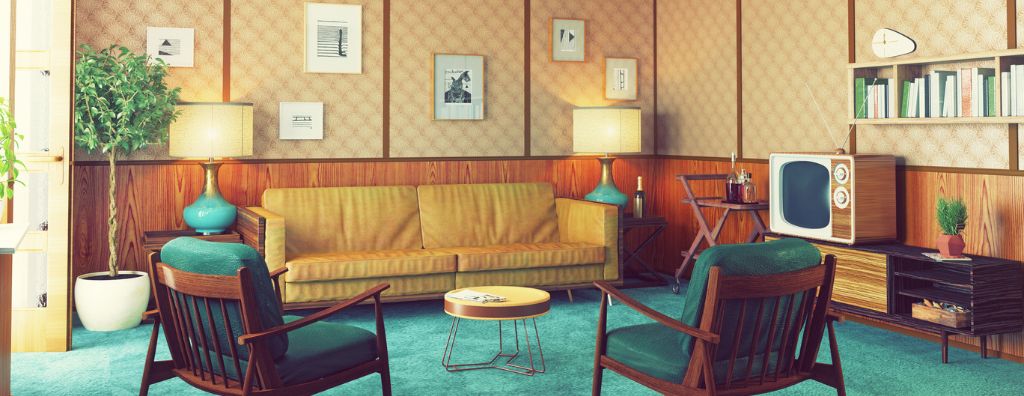
Few interior design styles have captivated our imaginations like mid-century modern. Though the mid-century modern movement began to impact design culture many decades ago, we still see its lasting impact today. This vintage style remains popular for homeowners everywhere and shows no signs of slowing down. To aid your home décor efforts, let’s dig a bit deeper into what makes mid-century modern so special.
What is mid-century modern interior design?
The mid-century modern movement came to define graphic design, architecture, product development, and interior design in the 1940s, 1950s, and 1960s. Its emphasis on simplicity was a direct reaction to the more opulent styles that preceded it, heralding a shift in suburban home life. Here are a few of its signature features.
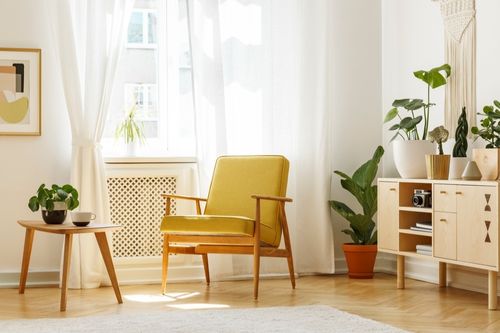
Image Source: Shutterstock – Image Credit: Ground Picture
5 Features of Mid-Century Modern Interior Design
1. Minimalism
Both mid-century modern architecture and interior design live by the maxim “less is more.” With minimal decoration, the space between objects is emphasized, giving interiors a fresh and clean look. Straight lines are a tenet of this design style, reflected in the signature pieces of the era, such as the Eames chair (pictured below). This minimalist approach to interior design maximizes each object by removing all unnecessary elements.

Image Source: Shutterstock – Image Credit: Karen Culp
2. Combining Outdoor and Indoor
The minds behind the mid-century modern movement prioritized nature and questioned how interiors could interact with the outside world. Nowadays, it’s common for homeowners incorporating this style to decorate with house plants, but the harmony with nature extends further into home design with such elements as stone materials, exposed wood beams, and floor-to-ceiling windows to maximize natural light.
3. Mid-Century Modern Color Scheme
If you’re a fan of decorating with a neutral color palette, this style is perfect for your home. With a reliance on colors like black, white, cream, and grey, a quintessential feature of this décor style is using bolder colors as accents to pop against a neutral backdrop. Primary colors create added contrast and help to lead the eye throughout a room. Experiment with dark brown or black to create different moods within the mid-century modern color spectrum.
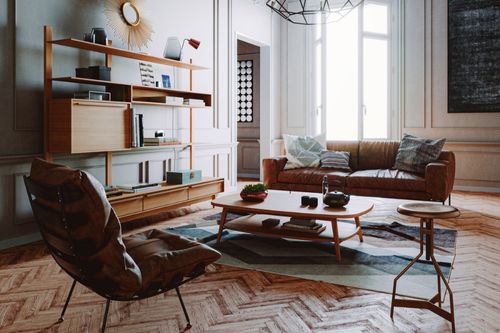
Image Source: Getty Images – Image Credit: gremlin
4. Materials and Texture
Its ability to remain popular for decades is what separates this style. Its principles are still reflected in the latest home design trends. Perhaps nowhere is this more evident than its philosophy on materials and texture. It combines natural and synthetic materials to bridge the gap between eras, creating interiors that feel simultaneously vintage and modern. Plastic and fiberglass are commonly used manmade materials, while wood, marble, and stone are typical natural elements.
5. More Space, Less Clutter
Just as the space between objects is emphasized, open floorplans are typical in mid-century modern design to create spacious environments. Decorative décor is limited to reduce clutter, and enclosed storage spaces are kept to a minimum. If you’re planning to decorate in this style, it’s an opportunity to pare down your belongings and keep only what’s essential for your lifestyle at home.
For more information on interior design, architecture styles, décor tips, and more, visit the Design category of our blog:
Featured Image Source: Getty Images – Image Credit: vicnt
What is Mid-Century Modern Architecture?
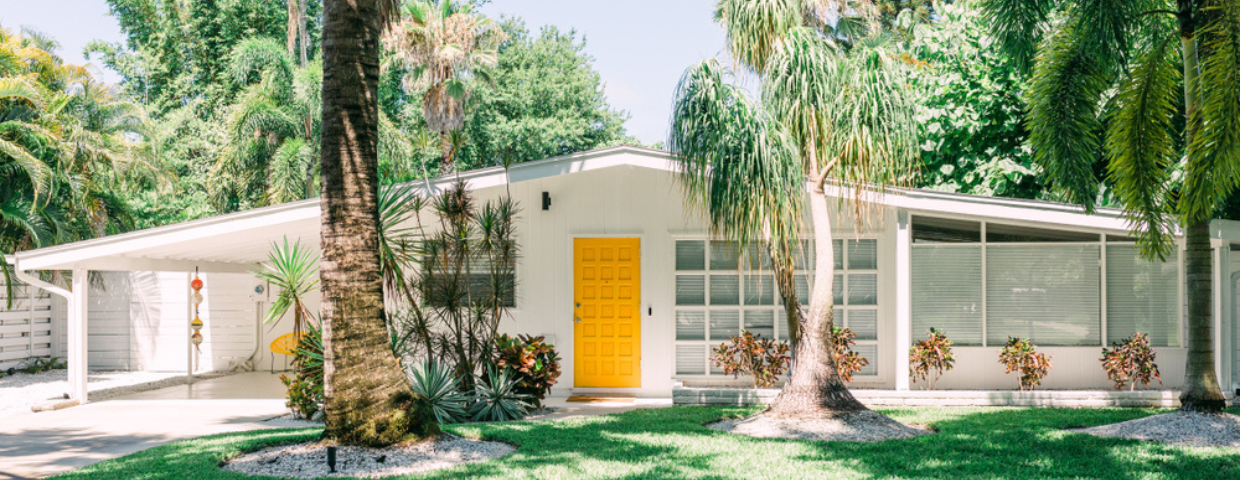
The mid-century modern movement’s impact on design reaches far and wide. Whether it’s graphic design, architecture, interior design, product development or elsewhere, we see traces of its influence in countless aspects of everyday life today. Mid-century modern homes are known for their signature look and stylistic appeal. Here’s a short guide to understanding the characteristics behind mid-century modern architecture.
Mid-Century Modern Design
Yes, mid-century modern interior design and mid-century modern architecture are two separate things. The interior design style emphasizes clean lines and minimal decoration, the use of natural elements as accents, and a base of neutral colors for decorating. MCM interior design can exist in any type of home regardless of its architectural style, and is often a popular source of inspiration for decorators fond of vintage elements and popular mid-century furniture pieces such as credenzas, teak desks, Eames chairs, etc.
What is Mid-Century Modern Architecture?
Mid-century modern architecture is the exterior counterpart of its interior design branch. Fueled by a massive need for suburban homes throughout the Unites States in the post-World War II era, the stage was set for mid-century modern’s introduction to the masses. Some of the greatest minds in modern architectural history helped develop and proliferate its presence in society, including Ludwig Mies van der Rohe and Frank Lloyd Wright. Though you’ll find unique variations within mid-century modern, there are certain tenets of the architectural style.
- Mid-century modern homes have flat roofs with straight lines. This clean geometric approach in roof design is part of a larger philosophical ideal that these homes should blend in with their outdoor environments, thereby working in harmony with nature.
- Glass is used heavily, and floor-to-ceiling windows are a common feature, especially in the living room.
- The minimalist approach to exterior design is showcased in the easy access to outdoor spaces and the fact that mid-century modern homes are often one-story buildings.
- The open spaces created by this architectural style allow for intentional decorating and the use of color splashes to bring energy into them. Mid-century modern interiors often incorporate vibrant, warm colors on top of a calmer, neutral foundation.
For more information on home design, read our guide to industrial design:
5 Midcentury Modern Homes That Make the Most of Their Small Design
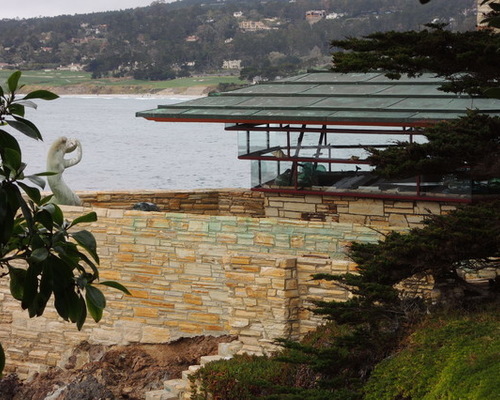
Midcentury modern homes were small out of necessity. Money was in short supply after World War II, so architects and builders had to keep houses compact yet functional to stay within homeowners’ budgets. At the same time, lifestyles were changing. Smart architects took on a new approach and designed homes with an open feel, which differed greatly from the boxy designs of the previous era.
 Facebook
Facebook
 X
X
 Pinterest
Pinterest
 Copy Link
Copy Link



